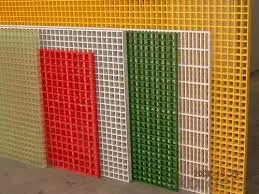
-
 Afrikaans
Afrikaans -
 Albanian
Albanian -
 Amharic
Amharic -
 Arabic
Arabic -
 Armenian
Armenian -
 Azerbaijani
Azerbaijani -
 Basque
Basque -
 Belarusian
Belarusian -
 Bengali
Bengali -
 Bosnian
Bosnian -
 Bulgarian
Bulgarian -
 Catalan
Catalan -
 Cebuano
Cebuano -
 China
China -
 China (Taiwan)
China (Taiwan) -
 Corsican
Corsican -
 Croatian
Croatian -
 Czech
Czech -
 Danish
Danish -
 Dutch
Dutch -
 English
English -
 Esperanto
Esperanto -
 Estonian
Estonian -
 Finnish
Finnish -
 French
French -
 Frisian
Frisian -
 Galician
Galician -
 Georgian
Georgian -
 German
German -
 Greek
Greek -
 Gujarati
Gujarati -
 Haitian Creole
Haitian Creole -
 hausa
hausa -
 hawaiian
hawaiian -
 Hebrew
Hebrew -
 Hindi
Hindi -
 Miao
Miao -
 Hungarian
Hungarian -
 Icelandic
Icelandic -
 igbo
igbo -
 Indonesian
Indonesian -
 irish
irish -
 Italian
Italian -
 Japanese
Japanese -
 Javanese
Javanese -
 Kannada
Kannada -
 kazakh
kazakh -
 Khmer
Khmer -
 Rwandese
Rwandese -
 Korean
Korean -
 Kurdish
Kurdish -
 Kyrgyz
Kyrgyz -
 Lao
Lao -
 Latin
Latin -
 Latvian
Latvian -
 Lithuanian
Lithuanian -
 Luxembourgish
Luxembourgish -
 Macedonian
Macedonian -
 Malgashi
Malgashi -
 Malay
Malay -
 Malayalam
Malayalam -
 Maltese
Maltese -
 Maori
Maori -
 Marathi
Marathi -
 Mongolian
Mongolian -
 Myanmar
Myanmar -
 Nepali
Nepali -
 Norwegian
Norwegian -
 Norwegian
Norwegian -
 Occitan
Occitan -
 Pashto
Pashto -
 Persian
Persian -
 Polish
Polish -
 Portuguese
Portuguese -
 Punjabi
Punjabi -
 Romanian
Romanian -
 Russian
Russian -
 Samoan
Samoan -
 Scottish Gaelic
Scottish Gaelic -
 Serbian
Serbian -
 Sesotho
Sesotho -
 Shona
Shona -
 Sindhi
Sindhi -
 Sinhala
Sinhala -
 Slovak
Slovak -
 Slovenian
Slovenian -
 Somali
Somali -
 Spanish
Spanish -
 Sundanese
Sundanese -
 Swahili
Swahili -
 Swedish
Swedish -
 Tagalog
Tagalog -
 Tajik
Tajik -
 Tamil
Tamil -
 Tatar
Tatar -
 Telugu
Telugu -
 Thai
Thai -
 Turkish
Turkish -
 Turkmen
Turkmen -
 Ukrainian
Ukrainian -
 Urdu
Urdu -
 Uighur
Uighur -
 Uzbek
Uzbek -
 Vietnamese
Vietnamese -
 Welsh
Welsh -
 Bantu
Bantu -
 Yiddish
Yiddish -
 Yoruba
Yoruba -
 Zulu
Zulu
fiberglass clarifier system for efficient water treatment and solid
Fiberglass Clarifier Systems for Efficient Water Treatment and Solid Management
In recent years, the need for efficient water treatment systems has become increasingly critical due to the rising global water shortage and the growing emphasis on environmental sustainability. Among the various technologies employed for this purpose, fiberglass clarifier systems have emerged as a leading solution for both industrial and municipal applications. This article explores the advantages of fiberglass clarifier systems in facilitating efficient water treatment and effective solid management.
Understanding Fiberglass Clarifier Systems
Fiberglass clarifiers are designed to separate solids from liquids, significantly improving water quality. They rely on the principles of gravity sedimentation, where solids contained in water settle at the bottom of a tank, allowing for the clarification of the effluent. Unlike traditional clarifiers, fiberglass systems offer unique benefits due to the properties of fiberglass as a construction material.
Fiberglass, or reinforced plastic, consists of a plastic matrix reinforced with fine glass fibers, resulting in a lightweight yet strong structure. This material is resistant to corrosion, UV light, and chemicals, which is particularly advantageous in water treatment settings where exposure to harsh environments is a common issue.
Advantages of Fiberglass Clarifier Systems
1. Durability and Longevity Unlike metal clarifiers, fiberglass systems do not corrode over time. This durability translates into a longer lifespan and reduced maintenance costs, ultimately providing a more sustainable solution for water treatment facilities.
2. Lightweight Design The lightweight nature of fiberglass makes these systems easier to transport and install. This characteristic is particularly beneficial in remote locations where heavy machinery for installation may not be readily available. Furthermore, installation time is significantly reduced compared to traditional materials, allowing facilities to become operational more quickly.
3. Customizability Fiberglass clarifiers can be manufactured in various sizes and configurations to meet specific operational requirements. This flexibility is essential for adapting to different water qualities and treatment processes, ensuring optimal performance in diverse scenarios.
fiberglass clarifier system for efficient water treatment and solid

4. Cost-Effectiveness While the initial investment in fiberglass clarifiers may be higher than traditional systems, the combination of lower operational costs and minimal upkeep over time usually results in significant long-term savings.
5. Environmental Compliance As regulations become stricter regarding water quality, fiberglass clarifiers present a reliable means of meeting compliance standards. Their efficient solid removal capabilities contribute to cleaner effluents and reduced environmental impact.
6. Energy Efficiency Many fiberglass clarifier designs incorporate energy-efficient features, such as gravitational flow and low operational power needs. This enhances their viability in sustainability-focused applications, reducing both energy consumption and operational costs.
Application in Water Treatment and Solid Management
Fiberglass clarifiers find utility across various sectors, including municipal wastewater treatment, industrial water purification, and stormwater management. In municipal settings, these systems aid in treating sewage and stormwater runoff, ensuring that water returned to the environment meets strict safety standards. In industrial applications, they remove contaminants from manufacturing processes, protecting both the environment and public health.
Moreover, the solids collected at the bottom of fiberglass clarifiers, often referred to as sludge, can be further processed. Advanced techniques such as anaerobic digestion or dewatering can be employed to convert waste into useful by-products, such as biogas or compost, illustrating a circular economy approach.
Conclusion
The integration of fiberglass clarifier systems into water treatment processes represents a significant advancement in technology driven by environmental needs and operational efficiencies. With their durability, lightweight design, and cost-effectiveness, these systems provide an excellent solution for effective solid management and water clarification. As we face growing challenges related to water scarcity and pollution, embracing innovative technologies like fiberglass clarifiers is crucial for creating sustainable water treatment infrastructures. Moving forward, continued research and development in this field will likely yield even more efficient methods to enhance water quality and protect our precious water resources.









